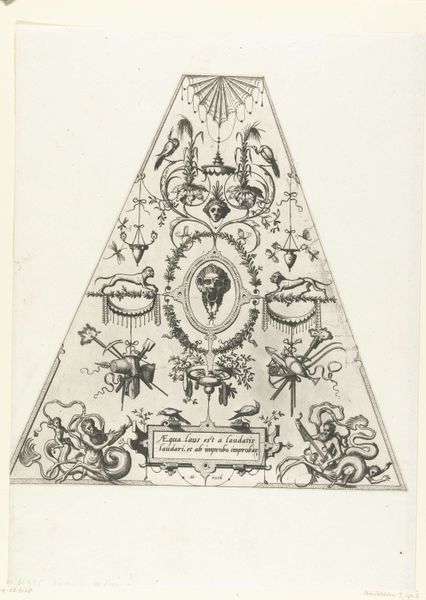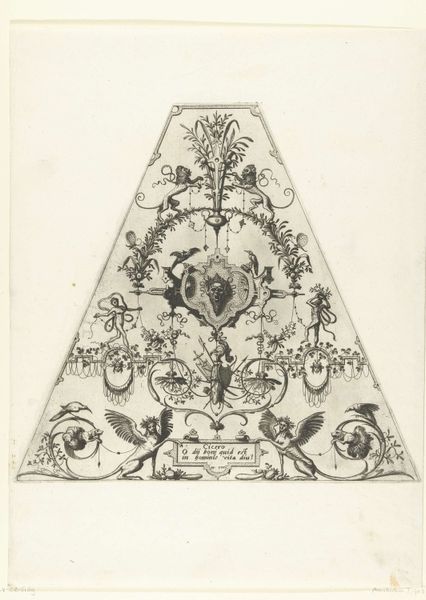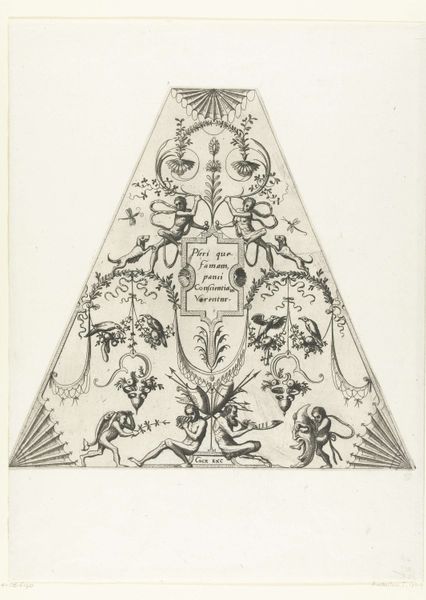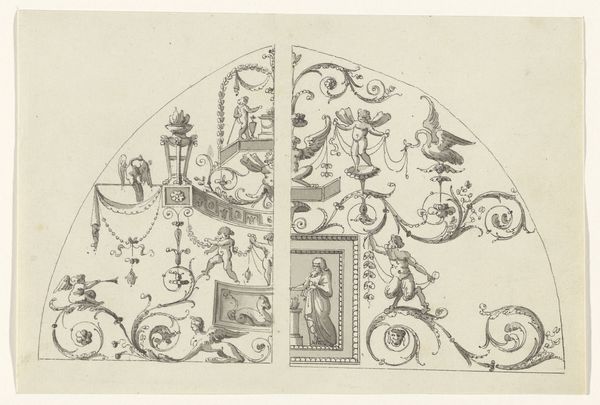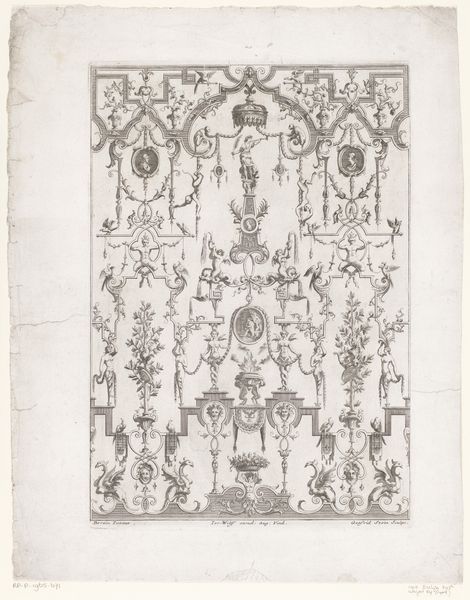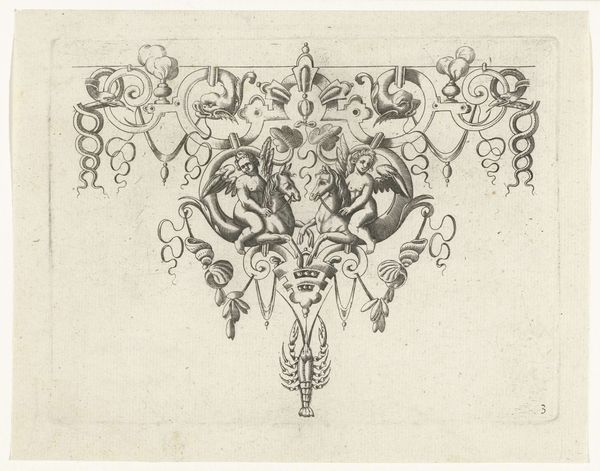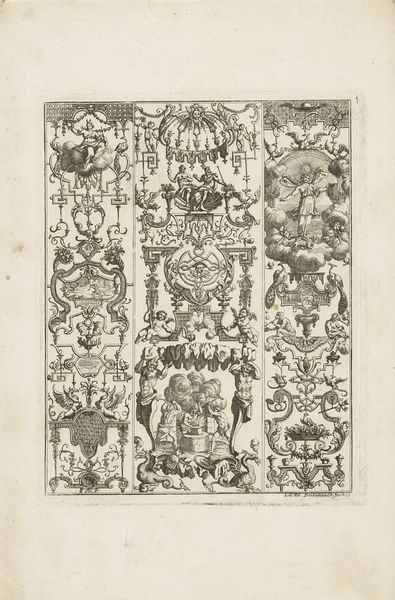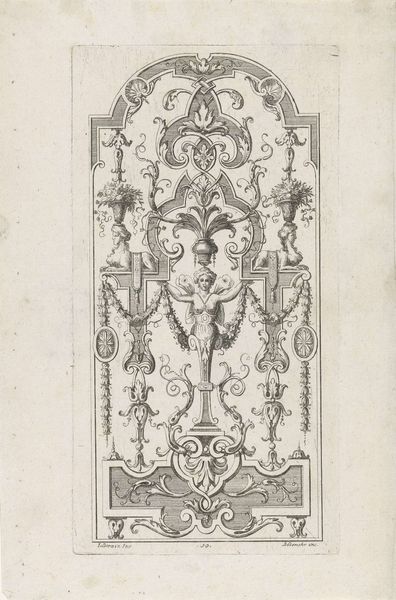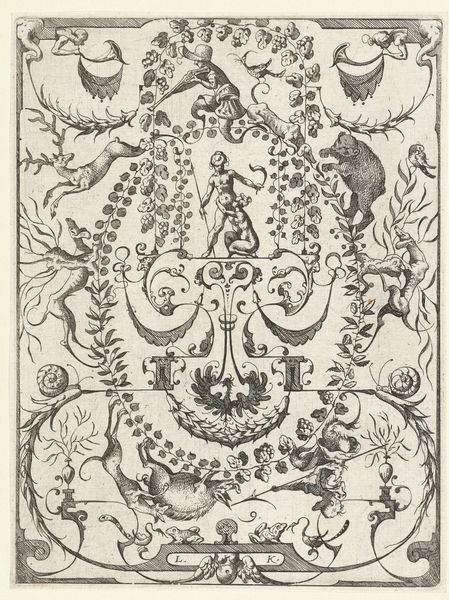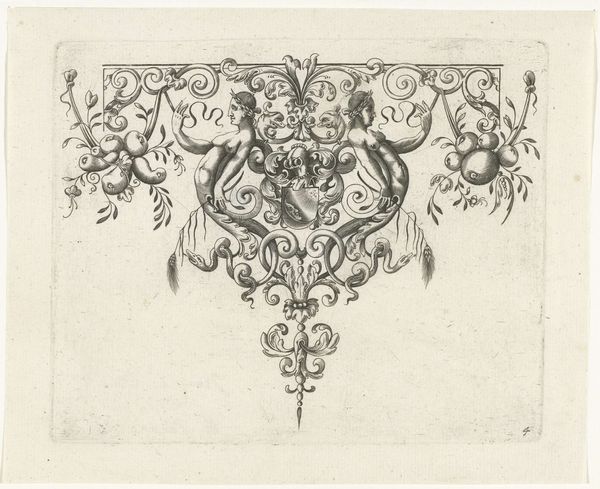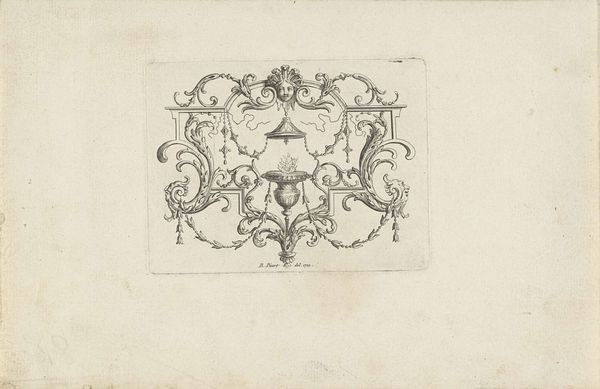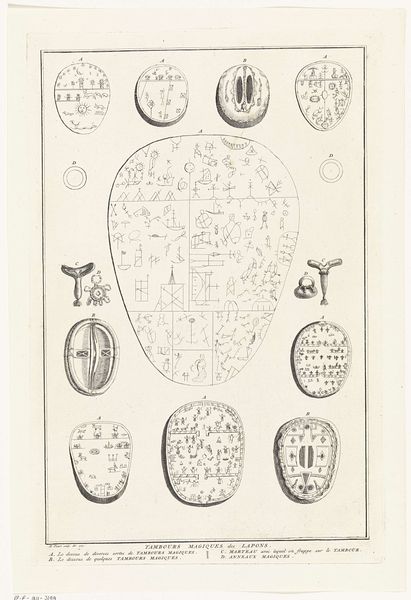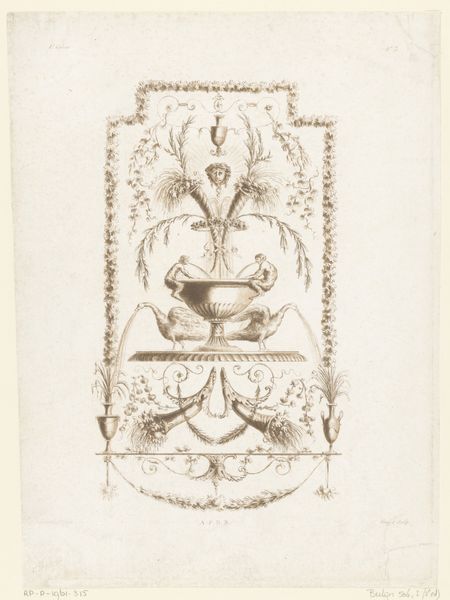
Trapeziumvormige vlakdecoratie, met een citaat van Sallustius c. 1564 - 1565
0:00
0:00
drawing, paper, ink
#
drawing
#
pen drawing
#
pen illustration
#
pen sketch
#
old engraving style
#
mannerism
#
figuration
#
paper
#
11_renaissance
#
personal sketchbook
#
ink
#
ink drawing experimentation
#
geometric
#
pen-ink sketch
#
line
#
pen work
#
sketchbook drawing
#
history-painting
#
sketchbook art
Dimensions: height 253 mm, height 57 mm, height 266 mm
Copyright: Rijks Museum: Open Domain
Curator: What strikes me immediately is the…organized chaos. Like a well-manicured garden overgrown with imagination. Editor: Precisely! Today we’re exploring a drawing attributed to Johannes or Lucas van Doetechum, titled "Trapeziumvormige vlakdecoratie, met een citaat van Sallustius", created around 1564-1565. It’s a pen and ink drawing on paper. Now held at the Rijksmuseum. Curator: So, trapezium – that's the shape, right? Kind of like a kite that’s been squashed a bit. And the artist fills every inch with…what are those, hybrid creatures? Half-human, half-beast. A lot of swirling, decorative elements. Editor: It’s deeply Mannerist, a style that embraced artifice and complexity. Look at how they incorporate a quote from Sallust – weaving text directly into the ornamental design, it adds layers of meaning and sophistication, common for Renaissance art which acted as didactic tool and visual feast. Curator: Right! The text grounds this for me; it lends meaning. I sense…melancholy, almost, despite the abundance of flourishes and characters, like it's trying very hard. And there are so many faces everywhere you look! Editor: The artist has carefully woven together different aesthetic values which co-existed at the time in print design: grotesques, foliage and geometrical shapes act in unison, the way you have said, to ground the composition with that inscription that serves to centre our view to consider the rest of its imagery. These were times of both, scientific as well as artistic progress where nothing seemed impossible. Curator: The detail is astonishing. Look at the delicacy of the pen work. It's practically begging to be an engraving, translated into print. Editor: And consider who Sallust was. A Roman historian known for his moralizing narratives and political critiques. Embedding his words suggests this "decorative surface" also serves a higher purpose, perhaps offering commentary on virtue or the state of society. Also, remember this historical time in Europe. There are rising political instability and conflict. That could bring an existential element. Curator: Which, oddly, resonates even now. That tension between beauty and the slightly unnerving, between order and disorder… it speaks to something timeless, doesn't it? Like we too are always making decoration for decoration's sake or is it really that "deeper purpose"? Editor: Exactly. And as we've seen, these objects can be far more than mere decoration. They encapsulate their period's fears and ideals, presented through an unique personal voice that both challenges and charms. I dare we allow it to trigger deeper exploration. Curator: Absolutely. I walked in and felt its freneticism—but I leave understanding it may hold something entirely different from just chaos on paper. Thank you.
Comments
No comments
Be the first to comment and join the conversation on the ultimate creative platform.
